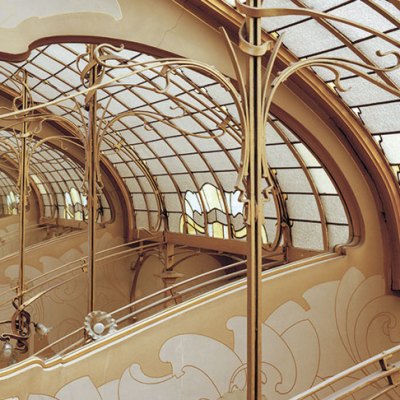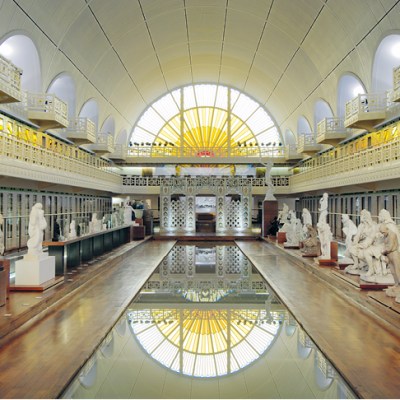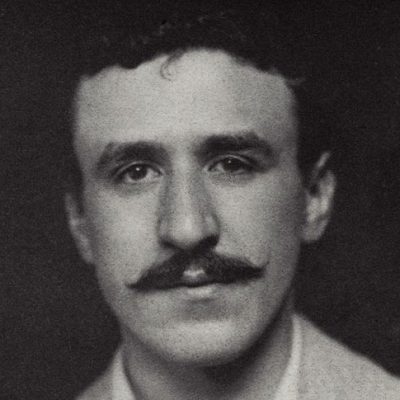Before modernists such as Walter Gropius and Le Corbusier staked their claim to being the true stylists of industrial society, a generation of designers all over Europe had made their own attempts to reconcile art and the machine age. Decades before white-painted concrete walls and tubular steel furniture were the rage, art nouveau turned new mass-production techniques to forms derived directly from nature, seeking to make sense of a new mechanical world by diving headlong into organic expression. The results are today much loved, but perhaps more as curios, a burst of creative energy heading in a direction that turned out to be something of a cul-de-sac. And while it might now be difficult to imagine wanting to live in an art nouveau house, there was a short time when it was precisely what some forward-thinking clients wanted.
In Nancy, in north-eastern France, renovation work has recently completed on the Villa Majorelle, one of the best surviving Gesamtkunstwerke of the entire period. The villa was built in 1901–02 for the furniture maker Louis Majorelle, and was designed by the architect Henri Sauvage, who began work on this, his first building, at the age of just 26. The villa is highly experimental, bursting with ideas straining to hold themselves together. An anti-classical composition, slightly gothic, slightly romanesque, sits under steep pitched roofs, and erupts with florid ironwork and detailing, with clusters of unrelated forms occurring across an otherwise smoothly cut limestone facade.
Majorelle intended for the house to be a showcase for his own work, and richly ornamental organic joinery abounds, from the swooping staircase, its balusters wrestling free from a whorl of ivy, to the intricate and ornate inlay work running across many surfaces. Other artists contributing to the ensemble include the painters Francis Jourdain and Henri Royer, who provided colouristic friezes to various rooms, and the stained-glass artist Jacques Gruber. Most notably, Sauvage involved the ceramic artist Alexandre Bigot, who in the middle of the dining room created a frankly terrifying fireplace, like a monstrous creature tearing through the fabric of an otherwise respectable home.
View of the staircase from the ground floor, after restoration. Photo: S. Levaillant; musée de l’École de Nancy

This is one of the tricky things about art nouveau – contemporary eyes see its flamboyance in a different light. This is partly due to its later formal resonances with triffids, aliens, body horror and such like but also because, after a century of more refined tastes, it can be an overly rich meal. One imagines living in its foliated grottos would be a bit like eating at a Michelin-starred restaurant three times a day – delectable but exhausting.
Indeed, the villa was a domestic house for only a short while and after Majorelle died in 1926 his son – the painter Jacques Majorelle – sold it to the state, who used it as offices over the years. Although the grounds would be sold off, it was kept largely intact, making the recent €3.5m restoration to bring it back to full public view somewhat less arduous. The works largely involve returning the building as close as possible to its domestic state, while avoiding too much historical licence; they range from removing a bay window that had closed off the original terrace to recovering layers of wallpaper and paint that had been covered for generations. In some cases the careful documentary work has left rooms perhaps more spartan than they would have been at the time, due to a lack of conclusive evidence of their original state, but the sense of an all-enveloping aesthetic remains clear.
To fill the house, various items – such as Majorelle’s ‘butterfly’ bed – have been transferred from the Musée de l’École de Nancy, whose collection contains many examples of this local movement. Nancy was the first city in the east of France to become properly industrialised, growing rapidly with refugees – and a flurry of cultural activity – as a result of the Franco-Prussian War of 1870–71. The question of industrial production and how it could be expressive and accessible were key challenges.
The École de Nancy coalesced around artists and makers born in the middle of the 19th century, who were often the inheritors of conventional, family manufacturing business. Émile Gallé, who steered his faience and glass company towards the new styles, was one of these figures and became the first president of the school in 1901. The Daum brothers’ glass factory contributed to the blossoming of the movement, while Louis Majorelle also inherited his furniture company, maintaining its previous operations while designing his luxury works as prototypes for mass production. Other figures included Victor Prouvé, the painter of fawns and fronds – and father of Jean Prouvé, perhaps the most influential industrial designer of the 20th century.
Photograph of the sitting room in the Villa Majorelle, published in ‘Art et Décoration’ in 1902. Courtesy musée de l’École de Nancy

Henri Sauvage, born in 1873, was a generation younger than the art nouveau designers, and after the Villa Majorelle he would largely move on to other fields. Alongside his contemporary Auguste Perret, Sauvage experimented with the new material of reinforced concrete, designing blocks of low-cost workers’ housing such as at 7 rue Trétaigne (1903–04) which look forward to the functionalist manner of structural expression that later became widespread. Sauvage became obsessed with the prospects of concrete stepped sections, whereby each floor of a building is set further back than the one below, thus creating outdoor space for every occupant. He built a small number of exciting projects in Paris in this vein, at rue Vavin (1912), clad in hygienic glazed tiles, and rue des Amiraux (1923–27), which boasted a swimming pool in its shadowy undercroft, but it wasn’t until the 1960s that the stepped section became a popular strategy for housing.
Later, Sauvage found himself a decade older than the great modernist generation of Corbusier, Van der Rohe and Gropius, and a little out of touch. His more relaxed art deco manner, as visible in the La Samaritaine department store, his last project before his death in 1932, was often unfavourably compared to the work of the younger, more uncompromising firebrands, its significance being appreciated only in the 1970s as postmodernists upset the hierarchy of taste once more. In recent years, architect Édouard François has been restoring Sauvage’s work at La Samaritaine as part of a massive refurbishment led by Japanese architects SANAA, whose rippling glass facade offers a 21st-century counterpoint to Sauvage’s flamboyant modernity.
From the April 2020 issue of Apollo. Preview and subscribe here.



